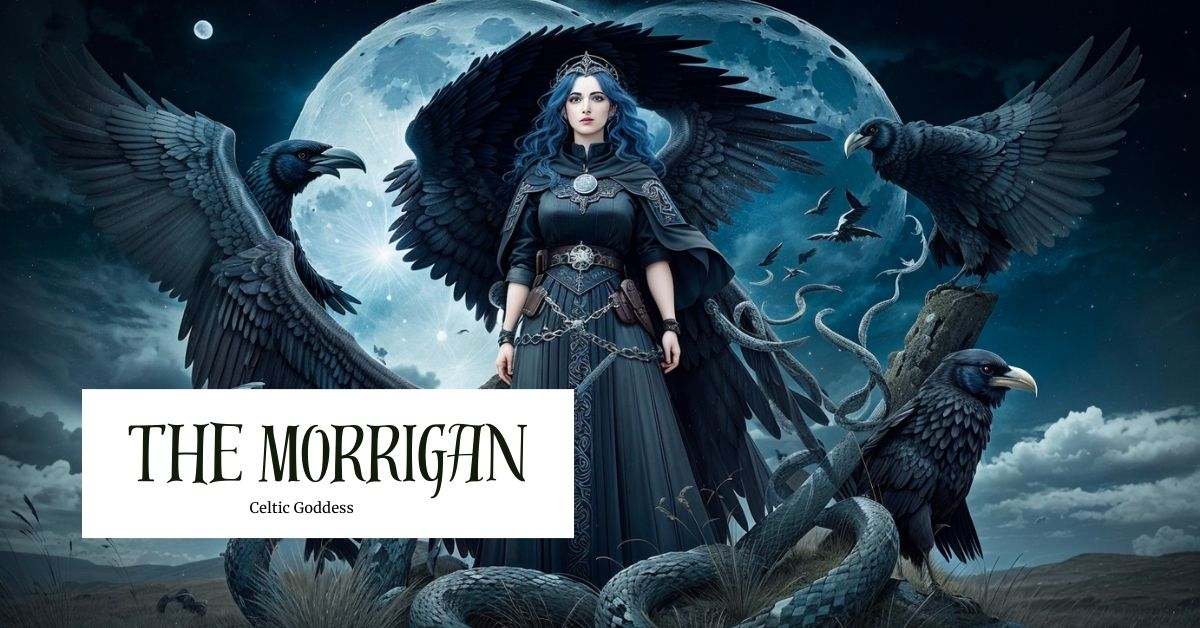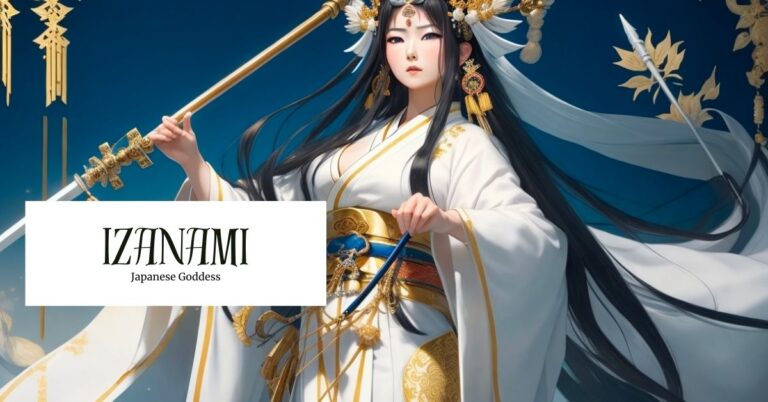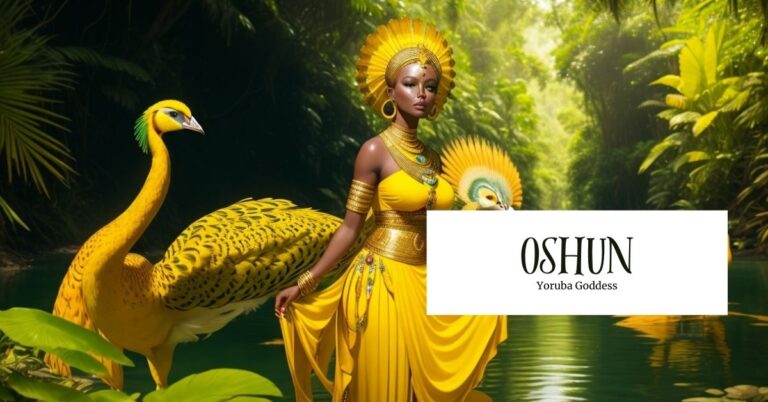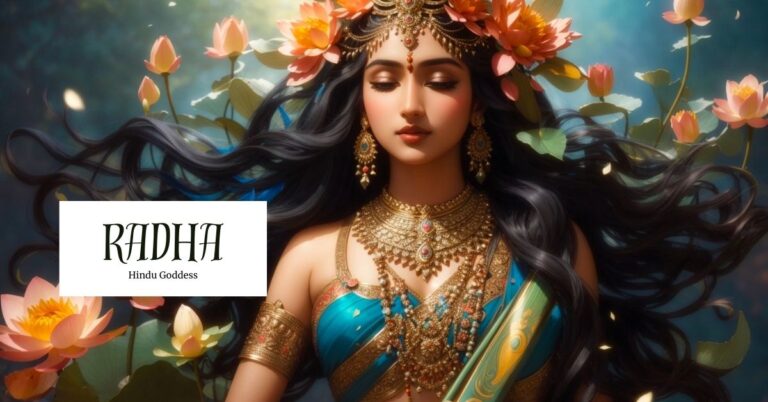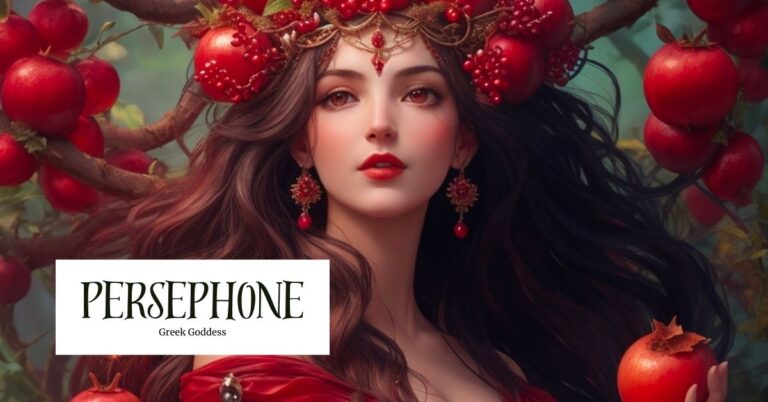The Morrigan: Triple Goddess of Death
In Celtic mythology, the goddess Morrigan is depicted as a triple goddess. She exists as three distinct but interconnected Goddesses. She is associated with sovereignty, as she could grant or withdraw power from rulers, and was known to appear on the battlefield as a harbinger of doom, foretelling the outcome of conflicts and inspiring warriors to fight fiercely.
Morrigan has remained a source of inspiration through appearing in forms of literature, art, and modern pagan practices. Her image as a powerful and mysterious goddess creates an interesting tale for Celtic Mythology and how they perceive the afterlife.
Overview
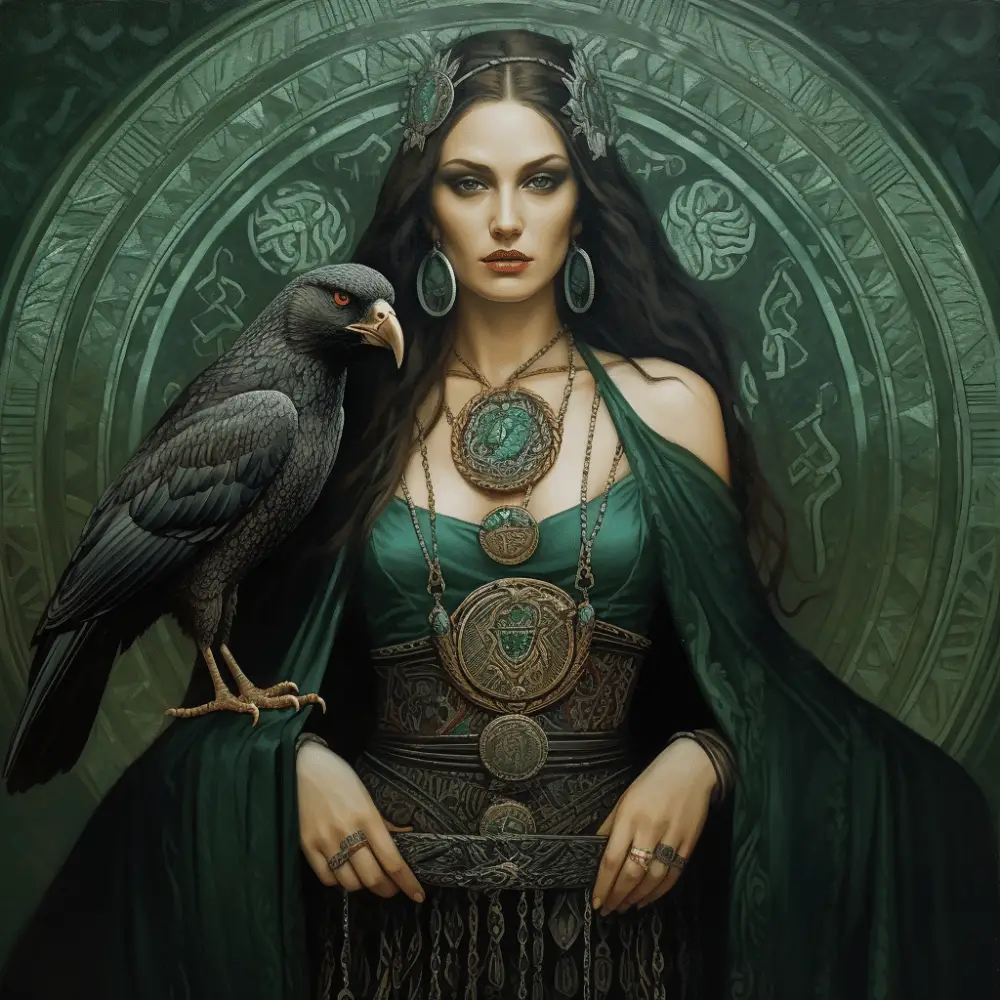
Source: Irish Wishes
The Morrigan is an Irish goddess prominently featured in Irish mythology. She is often associated with death and is considered a guardian of the dead. As a shapeshifter, she possesses the ability to transform into various forms, including those of crows or ravens. In Irish mythology, the Morrigan is a complex deity. Known as a triple goddess, consisting of three distinct entities: Macha, Badb, and Nemain. Each aspect of the Morrigan represents different aspects of war, fate, and sovereignty.
As a goddess of death, Morrigan is believed to have a close connection to the realm of the dead. She is sometimes seen as guiding and protecting the souls of deceased warriors, ensuring their safe passage to the Netherworld. Morrigan’s role in Irish mythology extends beyond her association with death. Her presence on the battlefield is often seen as an omen of impending conflict or as a catalyst for inspiring warriors to fight courageously.
Also, adding to her associations with death and sovereignty, the Morrigan is known for her prophetic abilities. Understanding her Irish origin’s help us connects her to Celtic mythology. She continues to be respected and celebrated as a powerful goddess. Morrigan carries both the cycle of life and death and the powers of shape shifting. Understanding her Irish origin’s help us connects her to Celtic mythology.
Titles
- The Morrigan Goddess
- The Celtic Goddess of Death
- Morrígu
- The Celtic Goddess Morrigan
- Great Queen Goddess Morrigan
- The Morrighan
- The Morrigan Celtic Goddess
- The Great Queen
- The Queen of the Triple Goddesses
- “Irish Kali”
- The Phantom Queen
- Keeper of death
Abilities
The goddess Morrigan exhibits a diverse range of abilities that prove her power and influence in Irish mythology. As a deity who moves through the cycle of life and death, she holds a deep understanding of the mysteries of existence. Her connection to power, energy, and warfare emphasizes her role as an intimidating force in battle. Making her capable of empowering warriors and foretelling the outcomes of conflicts. However, Morrigan’s abilities extend beyond the realm of war. She is also depicted as a healer, possessing the capacity to mend wounds and restore vitality.
She assumes the role of a protector of the land. As an Irish goddess, she symbolizes the essence of death and serves as a guardian of the dead, guiding departed souls to the Netherworld. The Morrigan’s abilities highlight her complex nature and the vast scope of her influence in the realms of life, death, power, and protection.
Characteristics
The goddess Morrigan possesses an awe-inspiring and eerie presence that strikes fear into the hearts of those who meet her. With her unsettling appearance, she emanates an aura of darkness and mystery. Often depicted as a fearsome and frightening figure, her appearance gives a sense of unease and dread. In her manifestations as a human hag, Morrigan takes on a form that reflects her connection to the darker aspects of existence.
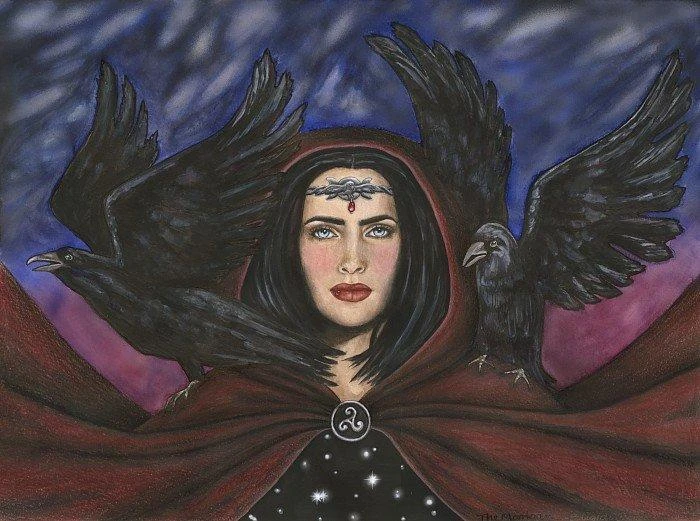
Source: Myth and Folklore Wiki
Through her twisted and weathered features, she is the embodiment of age and decay. It gives a sense of ancient wisdom and primal power. It’s in this form that she has otherworldly energy, captivating all who behold her. The combination of her eerie appearance and ability to transform into a human hag creates a character that is both haunting and enigmatic. This leaves an impression on those who meet her in the realm of myth and legend.
Traits
The goddess Morrigan possesses a complex personality that make her a compelling figure in Celtic mythology. She encompasses both dark and light aspects. On one hand, she exudes an aura of strength, power, and ferocity. Her fierce and unwavering nature reflects her role as a goddess of war and death. She is unyielding in her determination and fearlessly confronts challenges head-on.
However, beneath her exterior, there is also a mysterious side to Morrigan. She possesses an innate wisdom and a deep understanding of the cycles of life and death. This gives her a profound connection to the realm of fate and the unseen forces. Her ability to foretell the future and manipulate destiny adds to her air of mystery.
While often associated with war and death, Morrigan is not without compassion and protective instincts. She has been known to act as a guardian of the land, showing concern for the well-being of the Irish people and their sovereignty. Her presence evokes a mixture of fear and fascination, making her a captivating and unforgettable goddess in the realm of Celtic mythology.
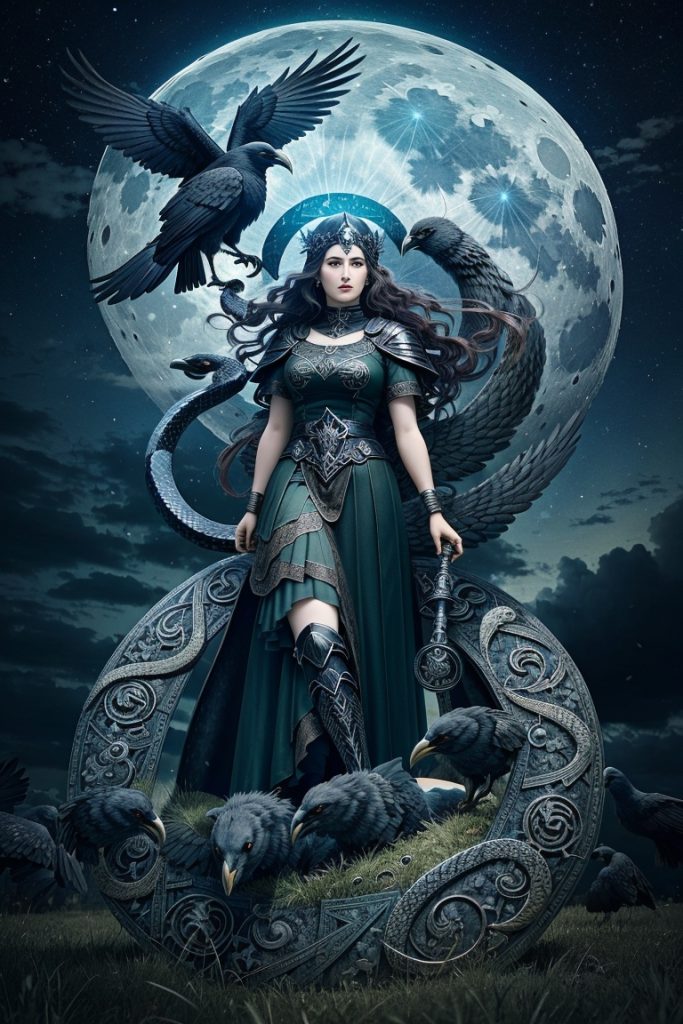
Symbols
The symbols associated with the goddess Morrigan carry deep meaning and show her connection to death, transformation, and ancient spiritual practices. Crows and ravens, known for their association with death and the afterlife, serve as potent symbols representing the Morrigan’s role as a guardian of the dead. These intelligent birds, often seen feasting on and transforming the bodies of the deceased, mirror her power to guide souls through the cycle of life and death.
Lunar circles and snake coils are also significant symbols associated with the Morrigan. The lunar circles represent the moon’s influence on the flow of life and death. This symbolizes her connection to the cycles of nature and the passage of time. The snake coils and triple snake spirals reflect her transformative abilities and the shedding of old skin to reveal new beginnings. They represent the cycle of rebirth and renewal, capturing the Morrigan’s association with both death and regeneration.
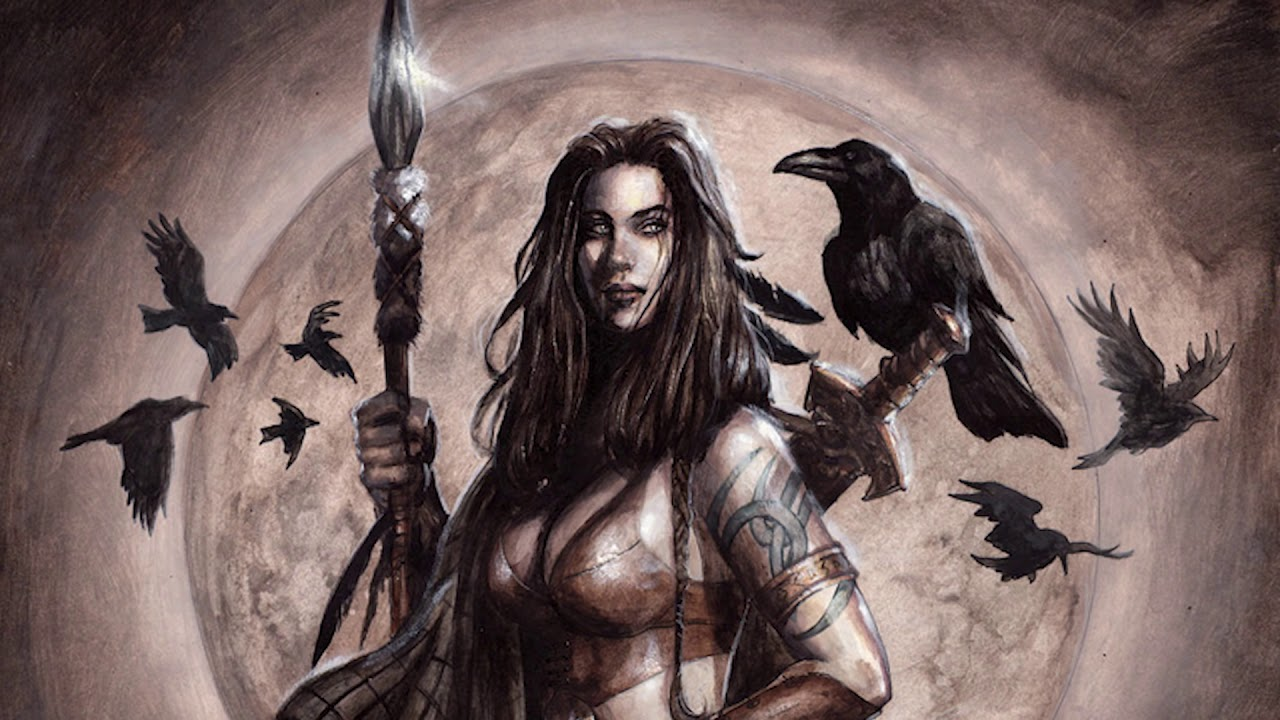
Source: Connolly Cove
Another notable symbol linked to the Morrigan is the grand megalithic tomb-shrine in Newgrange, Ireland. This ancient site is believed to hold deep spiritual significance and aligns with her role as a guardian of the dead. The tomb-shrine, with its intricate stone carvings and celestial alignments, serves as a powerful representation of her connection to the ancestral spirits and the sacredness of the earth.
Festivals and Rituals
Festivals and rituals dedicated to the goddess Morrigan were vibrant and mystical affairs. They were characterized by the formation of circles and the transmission of energy through energetic ring dances. Women would gather together to form sacred circles that represented the unity of the divine feminine. Within these circles, they would engage in intricate and rhythmic movements, creating a swirling and circling motion that symbolized the eternal cycles of life, death, and rebirth. These ring dances served as a conduit for the transmission of energy from the elements.
The festivals and rituals dedicated to the Morrigan were rich in symbolism and intention. They celebrated the transformative power of the goddess, honoring her role as a guide through the realms of life, death, and regeneration. Through the energetic ring dances, participants sought to align themselves with the cosmic forces and tap into the divine energy inherent in the natural world.
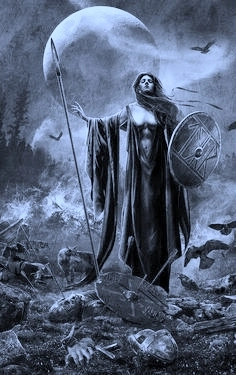
Legends associated with Morrigan
Being known as the goddess of death and Irish goddess of war there are many legends that mention Morrigan’s name. Most of them taking place on the battlefield and through the eyes of men afraid for their lives.
Origin Story
The origin story of the goddess Morrigan traces back to the Copper Age, where she emerged as a dominant deity in Europe. She was associated with the three phases of the moon: maiden, mother, and crone. These are symbolizing the cycles of life, transformation, and wisdom. As a prominent figure in Irish mythology, she belonged to the Tuatha de Danann, a group of gods and goddesses descended from Nemed.
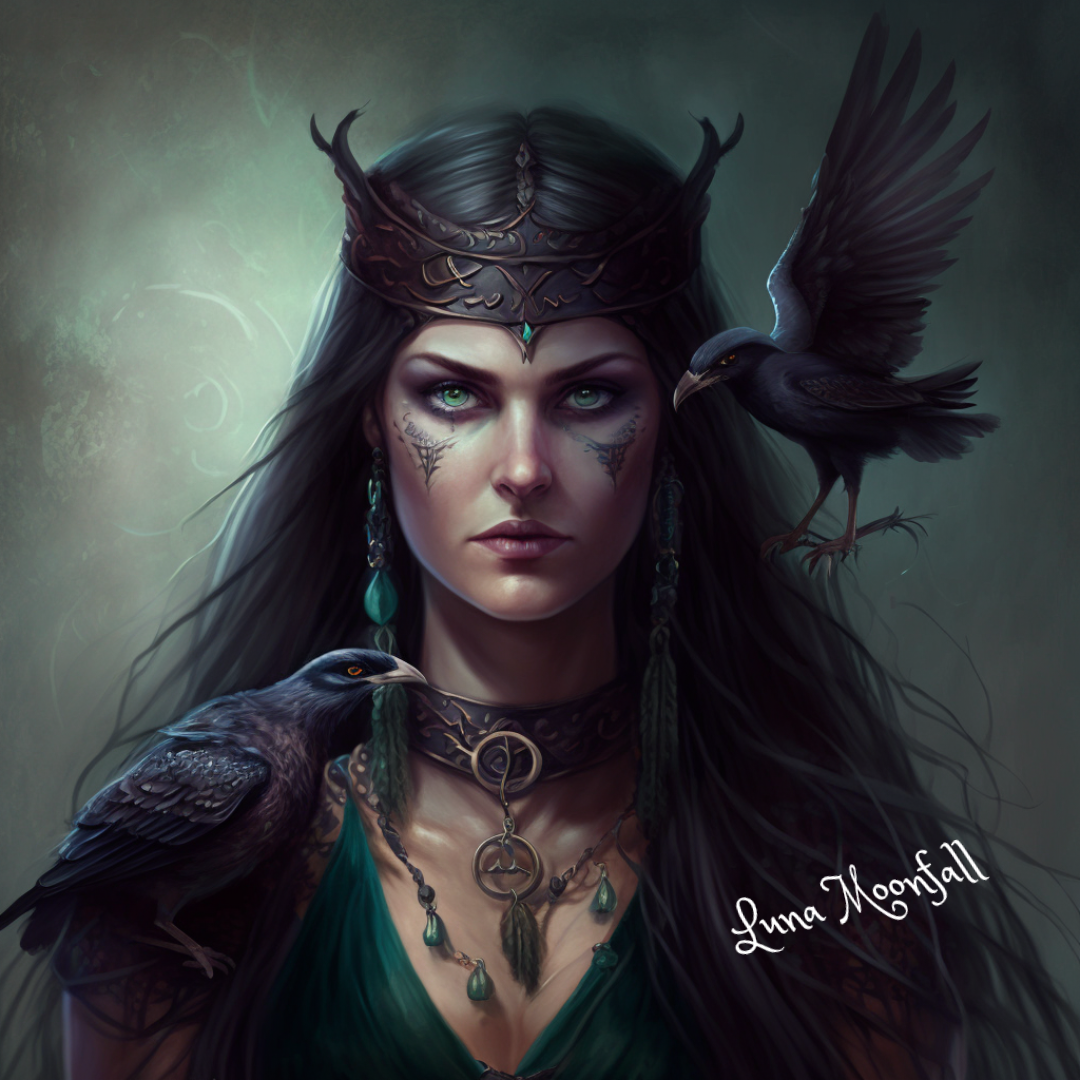
Source: Moonfall Metaphysical
According to myth, the Tuatha de Danann resided in a mythical country described as the underworld. During the time of Morrigan, the Celtic culture placed great importance on warfare, and it was not uncommon for women to take part actively in battle. Morrigan, the fierce and unyielding spirit and evil goddess of warfare, became a revered figure among warriors.
While Morrigan’s origin story does not specifically mention a consort, it is suggested that her later days consisted of keeping lovers. Her role as a warrior goddess, seer, and guide of the dead contributed to her revered status among the Celtic pantheon. As a formidable and influential figure, she continues to captivate the imagination and stay a central part of Irish mythology.
Morrigan and Cu Chulainn

Source: Amayo Druid
The legend of Morrigan and Cu Chulainn recounts the fateful encounters between the two during the defense of Ulster against Queen Maeve. Morrigan, deeply infatuated with Cu Chulainn, sought to seduce him but was met with his rejection. Enraged by this rejection, the shape-shifting goddess transformed into an eel and swam up to Cu Chulainn, tripping him as he traversed a fjord.
Cu Chulainn, quick to react, punched at the eel and managed to harm it temporarily. However, the eel transformed into a massive wolf, driving a herd of cattle towards Cu Chulainn. Using his sling-shot, Cu Chulainn struck Morrigan in the eye, temporarily blinding her. The goddess then transformed into a cow, inciting the herd to stampede towards Cu Chulainn. Yet, he avoided the cows and struck Morrigan with a stone, breaking her leg and forcing her to surrender.
Returning from the battle, Cu Chulainn encountered an elderly lady tending to a cow. Unaware that this woman was the Morrigan in disguise, he engaged her in conversation and accepted a drink of milk from her. Unknowingly, Cu Chulainn blessed the old woman again, inadvertently healing the Morrigan and restoring her strength.
Though healed, Morrigan did not engage Cu Chulainn in further combat, as she had already outsmarted him and used his unwitting aid to restore herself. During this battle, Cu Chulainn sustained mortal wounds. Determined to face his enemies even in death, he tied himself to a boulder with twine. As he neared his final moments, a crow landed on his shoulder, and he peacefully drifted off to eternal slumber.
The Three Sisters
In the legends of the Morrigan and her three sisters, Badb, Nemain, and Macha, a powerful trio emerges, each with different aspects of war, death, and transition. Badb, often identified as Morrigan herself, takes the form of a crow, earning her the title “Battle Crow.” She circles the battlefield, guiding fallen soldiers to the afterlife. The sight of Badb flying above the warriors brings fear. They believe it signifies that they are to die in battle. Soldiers would even leave the fallen on the field for a day, hoping that Morrigan would claim their souls and guide them to the underworld.
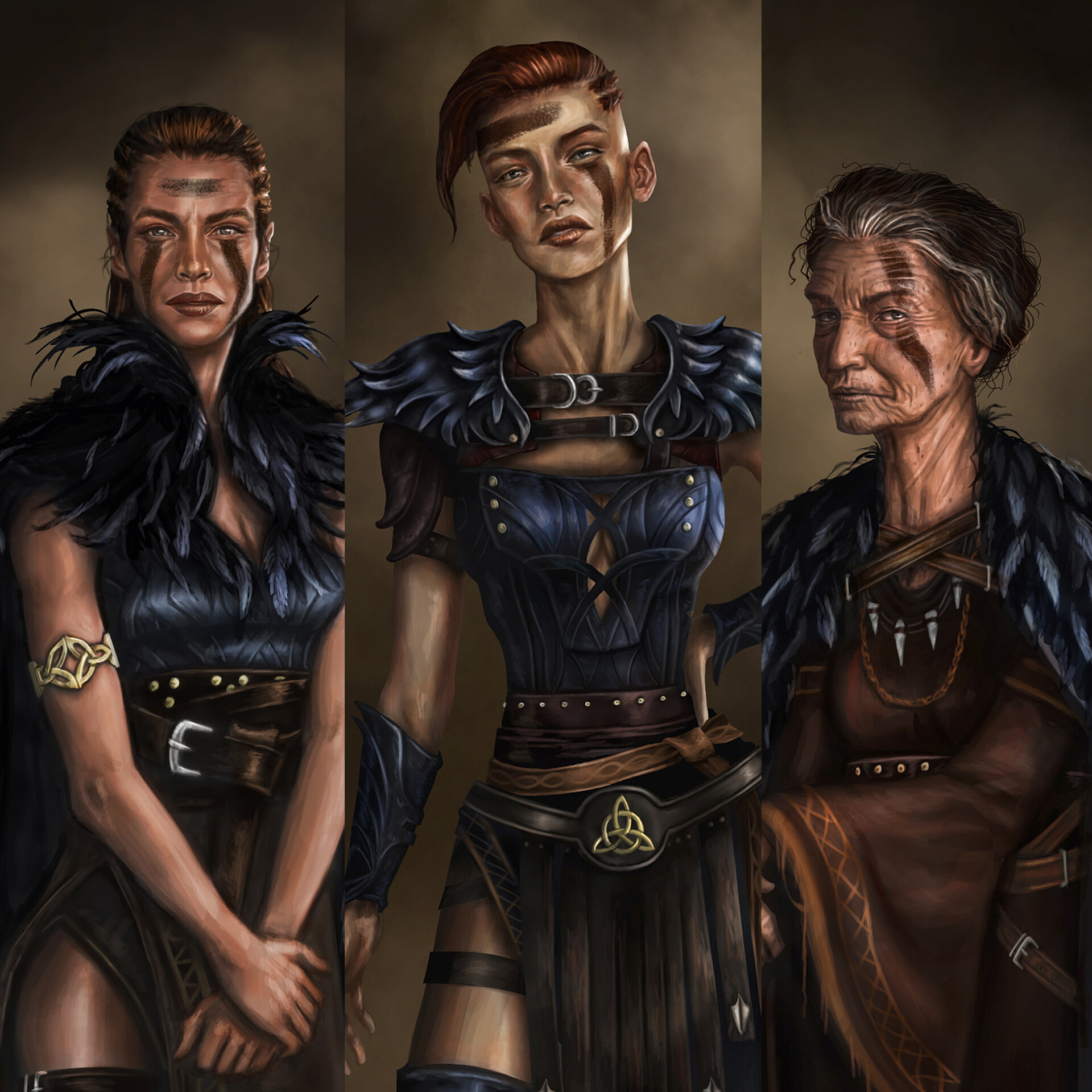
Source: Axel Barel
Nemain, another sister, assumes the role of the comfort goddess in the transition of death. Her specific battle cries serve as omens of impending demise, striking fear into the hearts of those who hear them. Macha, the third sister, shares a striking resemblance to Morrigan, often appearing as a crow on the battlefield. This similarity sometimes causes confusion between the two goddesses. Macha, like Morrigan, is associated with war and land, intertwining the concepts of conflict and sovereignty.
Modern appearances
One of my favorite modern appearances of the Morrigan is in the A Court of Thorns and Roses series by Sarah J. Maas. While not directly Celtic mythology, the series pulls heavily from Celtic myths and legends. The Morrigan in this series appears a Fae princess of the Night Court. Known as Mor to her friends, she’s lethal, beautiful, as well as both savage and refined. She’s a deadly warrior.
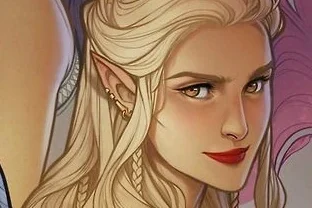
Image source: ACOTAR Fandom
Final thoughts
The goddess Morrigan stands as a prominent figure within Celtic mythology, as a sign of the puzzling realms of death, transformation, and warfare. As an Irish deity, she holds a significant place in ancient folklore and continues to captivate the imagination of those intrigued by the mysticism of the Celtic pantheon. From her role as a guardian of the dead and a shapeshifter who moves through the cycles of life and death, to her associations with power, energy, and enchantment, Morrigan’s multifaceted nature is a testament to the depth of the Celtic belief system. Her symbolism, represented by crows and ravens, lunar circles and snake coils, and the grand megalithic tomb-shrine, amplifies her mysterious allure
Morrigan’s legends and tales, including her encounters with figures like Cu Chulainn and her connection to her three sisters, shows the myth and magic that is explored in Celtic mythology. Morrigan’s tales and legends help us understand how Celtic Mythology interprets the after-life.

